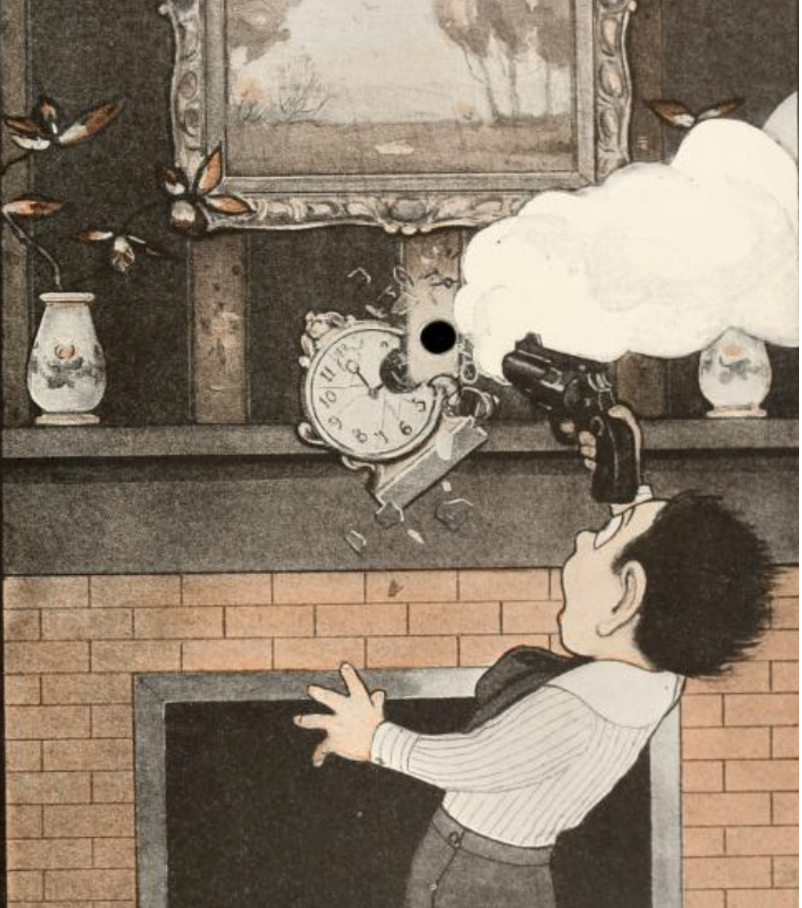The shot heard round the world: Violent geographies in Peter Newell’s The Hole Book.
Society for Cinema and Media Studies conference, March 2024.
American artist and author Peter Newell’s The Hole Book (New York: Harper and Brothers, 1908) features a curious material attribute that sets it apart from other early twentieth-century children’s picture books. A die-cut circular hole is pierced straight through the book’s middle, cover-to-cover. At first glance, The Hole Book appears to adapt the peep show format: its cover features a snaking line of children patiently waiting to peer through the hole at the book’s center. If readers choose to follow this prompt to peep through the hole, instead of seeing into the book, they look right through it. In fact, the book’s narrative momentum is driven by the action that transpires around the hole on each page, which is made by a child carelessly firing a bullet in the first scene. The rest of the story depicts the havoc that the bullet wreaks as it tears through a series of vignettes full of racial and ethnic stereotypes.
This paper will examine The Hole Book as an interstitial media format that bridges pre- and post-cinematic cultures in the first decade of the twentieth century. In its formal and iconographic allusions to the peep show hole, Newell’s book borrows conventions of earlier peep media for young users, such as tunnel or accordion books, many of which similarly domesticated and thematized travel in various ways, such as titles that promised a trip through the Thames Tunnel or an outing at the Crystal Palace. Simultaneously, it speaks to the spectacle of early cinema in its narrative dramatizations of gunfire, dramatic explosions, and visual gags that strategically use the hole. Distinct from other analyses of peep-adjacent media, this paper takes as its departure not the peephole through which the spectator’s gaze is fixed and delineated, but rather, the surrounding assemblage of book object, text, and image that structures a dynamic narrative journey. In its combination of virtual travel that relies upon racial and ethnic tropes, its depiction of spectacular effects, and an errant gunshot as its overarching narrative frame, The Hole Book uniquely alludes to the violence of empire and the jolting sensorium of early cinema. Considering the book in conjunction with Newell’s broader preoccupations with optical illusions and toys, the paper also asks what other sensory registers might be engaged in the analysis of similar media artifacts.
